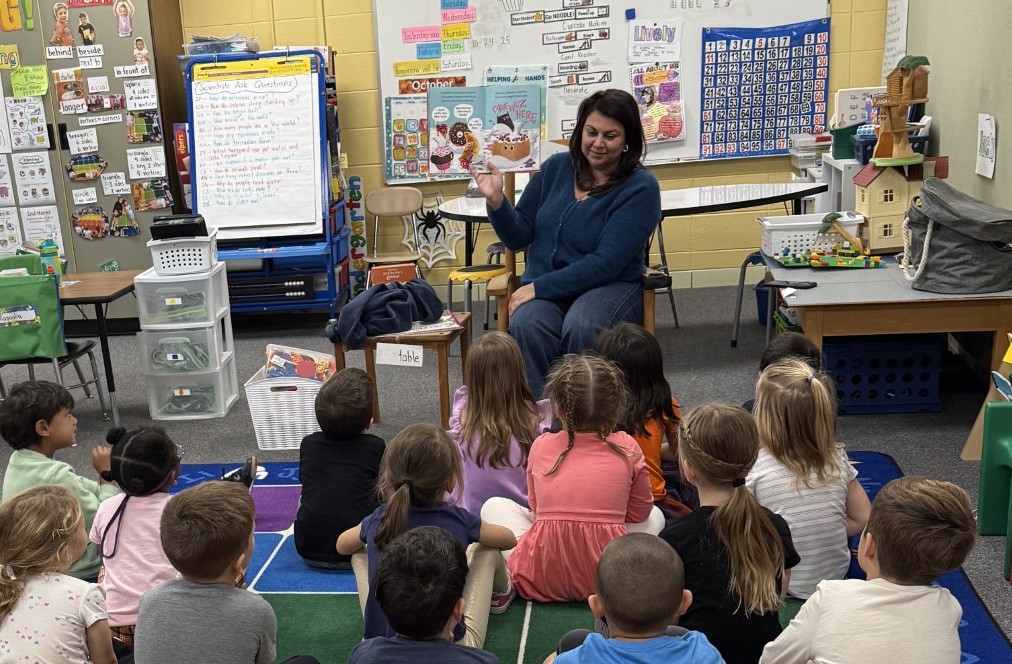8 Ways to Create AI-Proof Writing Prompts
Strategies for writing AI-proof prompts to use in your classes.

This article was updated in October 2025.
AI is getting harder to spot.
Back in early 2024, I wrote a previous version of this story. Many of the suggestions I included then for AI-proofing your writing assignments and prompts for students no longer work. Back then, merely requiring students to incorporate recent events could throw off most AI models. That's no longer the case.
But as AI has gotten more effective, my methods for writing AI-proof prompts have also evolved. The strategies below are not perfect, but can limit AI use in your class and/or help make it more obvious.
Essentially, I like to use the public health Swiss cheese analogy when thinking about AI prevention: All these strategies on their own have holes but when you layer the cheese together, you create a barrier that’s hard to get through.
The eight strategies here may not prevent students from submitting AI work, but I find these can incentivize human writing and make sure that any work submitted via AI will not really meet the requirements of the assignment.
1. Writing AI-Proof Prompts: Put Your Prompt Into Popular AI Tools Such As ChatGPT, Copilot, And Gemini
Putting your writing prompt into an AI tools will give you an immediate idea of how most AI tools will handle your prompt. If the various AI chatbots do a good, or at least adequate, job immediately, it might be wise to tweak the prompt.
One of my classes asks students to write about a prized possession. When you put this prompt into an AI chatbot, it frequently returns an essay about a family member's finely crafted watch. I've since updated this prompt to make it less easy for AI to duplicate. Obviously, I now watch out for any essays about watches.
Tools and ideas to transform education. Sign up below.
2. Forbid Cliché Use
Probably the quickest and easiest way to cut back on some AI use is to come down hard on cliché use in writing assignments. AI tools are essentially cliché machines, so banning these can prevent a lot of AI use.
Equally as important, this practice will help your students become better writers. As any good writer knows, clichés should be avoided like the plague.
3. Localize Assignments
Previously, most free AI tools lacked access to the internet, so in previous versions of this story, I'd advocated writing assignment prompts that required students to reflect on recent events. Unfortunately, that's not as effective a strategy these days, as most AI chatbots have increased internet access and are better at sourcing the web with accurate and up-to-date info.
To replace those assignments, I find myself localizing assignments more and more, asking about issues in the town or school at which I teach. AI still struggles with this type of local knowledge, particularly when it comes to places or events that may not yet have been covered on the internet.
4. Require Quotes And Summaries of Short Videos
For a recent assignment, I asked students to examine the rhetorical strategies employed by their favorite ads and include a YouTube link. I can immediately tell when they were using AI because the AI descriptions of the ads were either incredibly odd or just weirdly flat. AI also still struggles with summarizing video overall, I’ve found, so including a video component to an assignment can help AI-proof it.
Additionally, requiring students to include robust quotations in each assignment can also help. AI can quote from sources these days, but it still likes to make up quotes, and even when it quotes a source accurately, it tends to keep the quotations much shorter than a human would, which can be a helpful AI tell.
5. Make Assignments Personal
Having students reflect on material in their own lives can be a good way to prevent AI writing. In-person teachers can get to know their students well enough to know when these types of personal details are fabricated.
I teach online but still find it easier to tell when a more personalized prompt was written by AI. For example, one student submitted a paper about how much she loved skateboarding that was so non-specific it screamed AI written. Another submitted a post about a pair of sneakers that was also clearly written by a "sole-less" AI (I could tell because of the clichés and other reasons).
6. Make Primary or Scholarly Sources Mandatory
Requiring sources that are not easily accessible on the internet can stop AI writing in its tracks. I like to have students find historic newspapers for certain assignments. The AI tools I am familiar with can’t incorporate these.
AI tools also struggle to incorporate journal articles. Encouraging your students to include these types of sources ensures the work they produce is deeper than something that can be revealed by a quick Google search, which not only makes it harder for AI to write but also can raise the overall quality.
7. Require Interviews, Field Trips, Etc.
Building on primary and scholarly sources, you can have your students conduct interviews or go on field trips to historic sites, museums, etc.
AI is still, thankfully, incapable of engaging in these types of behavior. This requires too much work for every assignment but it is the most effective way to truly ensure your work is human- not computer-written.
If you’re still worried about AI use, you can even go a step further by asking your students to include photos of them with their interview subjects or from the field trips. Yes, AI art generators are getting better as well, but remember the Swiss cheese analogy? Every layer of prevention can help.
8. Have Students Write During Class
As I said to start, none of the methods discussed are foolproof. Many ways around these safeguards already exist and there will be more ways to bypass these in the future. So if you’re really, really worried about AI use you may want to choose what I call the “nuclear option.” If you teach in person you can require students to write essays in person.
This approach definitely works for preventing AI and is okay for short pieces, but for longer pieces, it has a lot of downsides. I would have trouble writing a long piece in this setting and imagine many students will as well. Additionally, this requirement could create an accusatory class atmosphere that is more focused on preventing AI use than actually teaching. It’s also not practical for online teaching.
That all being said, given how common AI writing has become in education, I understand why some teachers will turn to this method. Hopefully, suggestions 1-7 will work but if AI-generated papers are still out of hand in your classroom, this is a blunt-force method that can work temporarily.
Good luck and may your assignments be free of AI writing!
Erik Ofgang is a Tech & Learning contributor. A journalist, author and educator, his work has appeared in The New York Times, the Washington Post, the Smithsonian, The Atlantic, and Associated Press. He currently teaches at Western Connecticut State University’s MFA program. While a staff writer at Connecticut Magazine he won a Society of Professional Journalism Award for his education reporting. He is interested in how humans learn and how technology can make that more effective.

